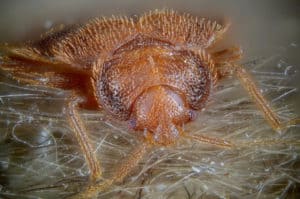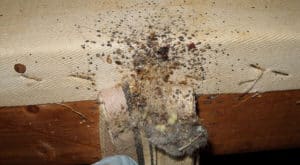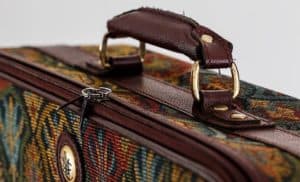Bed bugs are frustrating to fight. They can become a big nuisance in a small amount of time. But, they don’t have to be a continuous problem.
You just learned how to get rid of bed bugs even if you don’t have a lot of extra funds. You can fight them as effectively as professionals.
In this section, we are going to cover preventative measures. First, let’s discuss a few things NOT to do when you have bed bugs.
How To Keep Bed Bugs Away?
Bed bugs are a pain and a nuisance to get rid of. It is much easier and more efficient to keep them away. Fortunately, there are several steps that you can take to keep bed bugs away.
- Home Prevention
- Why Bed Bugs Keep Coming Back (And How To Stop It)
- Don’t Do These Things That Cause Infestations
- Early detection and identification is vital
- Frequent vacuuming disrupts nests and clusters
- Purchase used items safely
- Keep clutter to a minimum
- Practice safe bedroom habits
- Don’t use communal property
- Practice laundromat safety
- Practice public safety to keep bed bugs from hitching a ride
- Preventative care after work, school, and travel
Home Maintenance That Prevents Bed Bugs From Spreading
Bed bugs can crawl into a space as thin as a business card. They can crawl under walls, sheetrock, and insulation. They seldom use doorways to enter a room.
As a result, there are several steps you can take if you live in a condo, apartment, or a townhouse to help prevent the infestation of bed bugs from a neighbor.
- Seal your baseboards
- Glue down the edges of your carpet
- Seal electrical outlet covers, toilets, and bathroom vanities
- Use door sweeps to make it harder for bed bugs to go through entrances
Many homes have sealed baseboards that seal both the top and the bottom of the baseboard to the wall. This has become popular as a finishing touch that makes a home look more finished.
But, it also helps to stop the spread of bugs, especially bed bugs.
Sealing all your walls can keep bed bugs in your neighbor’s areas and out of yours. Use a silicone based sealant. You can usually find those at any home supply store or on Amazon. There are a wide variety of colors to match your baseboard colors.
Seal around light fixtures, electrical covers, and light switches. It will make a repair take a little more effort, but will also remind you to be careful of bed bugs when opening up the walls of your home.
Seal around your toilet, vanity, and showers. This helps to keep any traveling bed bugs inside the walls and floors. (Sealing toilets isn’t recommended by some plumbers because it keeps water leaks from showing as quickly)

Understand Why Bed Bugs Keep Coming Back After Eradication
If you want to get rid of bed bugs permanently, you will need to understand their lifecycle. You also need to understand how they travel and ways that homes are usually infected.
Female bed bugs can lay many eggs a day. The less she mates, the more eggs she can lay as mating causes scarring.
Some females can lay as many as 7-10 eggs a day. (I read in one place the number could be as high as 85 eggs a day, but I couldn’t verify that with another source.)
Eggs usually take 2 weeks to hatch. In some conditions, such as winter, eggs can take a few months to hatch.
Bed bugs must have a live feeding for them to grow through the 5 stages of molting before adulthood. They can also go into a diapause for up to 13 months. In rare cases, this “hibernation” can last longer.
That’s why most professionals will offer a 3 treatment plan that is every 2 weeks apart.
Bed bugs can travel through walls and from one housing unit to another. They can hitch rides on backpacks, tennis shoes, and in briefcases.
A single mated, female bed bug can infest an entire apartment within a month. Early detection and treatment are vital. Otherwise, it takes time and increased money to get rid of large populations of bed bugs.
Bed Bugs Are 1000 Times More Immune To Insecticides Than 50 Years Ago
Bed bugs can interbreed without adverse side effects. Interbreeding appears to make them stronger against insecticides. Professor Changlo Wang discovered that many infestations of entire complexes appear to have been caused by a single mated female that then laid eggs and reproduced with her offspring and the offspring with each other.
He also found that the steps listed in this article are the most effective way to eradicate an infestation of bed bugs.
Be sure to check out what you can do to prevent bed bugs permanently and how to travel safely in our last section of this guide.
Things People Do That Makes Bed Bugs A Bigger Problem.
There are several things that people do that makes a bed bug problem much worse and much more widespread. Never do these things if you have bed bugs.
- Never move to the couch to sleep! This will cause the bed bugs to follow you and will further infect other areas of your house. Bed bugs can travel through walls so it’s often easier for them to travel than it is for you. Plus they can smell the C02 you emit when you breathe.
- Don’t raise the thermostat to “kill” them. This will only put them into hibernation and raise your heating bill. Steam kills bed bugs because it is a quick temperature change. Reading the temperature of your home doesn’t affect inside the walls and other protected areas.
- Don’t “freeze” out the bed bugs. They are immune to cold and can come out of a comatose state after being frozen. Bed bugs need at least -13 Celcius to die and most freezers don’t get that cold!
- Never use bug bombs. They are not created for bed bugs. In several studies, bug bombs failed to kill any bed bugs in the area. While you may kill 1 or 2, they are more likely to leave the area. That means they will spread into other areas through the walls. Your infestation will grow larger.
- Don’t throw away your mattress without taking proper precautions. Mattresses should be encased in a bed bug encasement before being drug through your house. Otherwise, an infested mattress will spread the bed bugs around the entire building.
Early Detection Of Bed Bugs Is Vital
Be diligent and know how to identify them early. By the time that most people identify bed bugs, the population has usually spread.
Keep and maintain bedbug traps to identify early infestations. Check beds, backpacks and furniture frequently.
Look for bed bugs, listen for scuttling noise, and watch for brown or red spots along the crevices of mattresses, cushions or furniture.
You should also watch for yellow scales and white eggs, smaller than a grain of rice. The feces of bed bugs is brownish-red.

Photo Credit: louento.pix Flickr
Vacuum Frequently To Disrupt Colonies and Clusters
Regular vacuuming is one o the simplest and best preventative measures you can take against bed bugs. It will disrupt clusters of bed bugs and destroy groupings.
Vacuuming can pull up and contain early invasions before you realize you have a problem. Make sure that you have a HEPA certified vacuum to contain potential bed bug eggs and bugs.
Practice Safety When Purchasing Used Items
Used furniture, electronics, clothing, and toys are often carriers of bed bugs. When you purchase used items, you can take a few steps to ensure that you don’t bring bed bugs into your home.
- Throw all clothing, stuffed animals and other soft items into a dryer for 30 minutes
- Diligently check the seams, tags, labels, and crevices of all furniture for signs of bed bugs
- Inspect dresser drawers, runners, nooks, and crannies for signs of bed bugs
- Examine the openings, keyboards, power nooks, and air vents of electronics with a flashlight. Check for any signs of bedding bugs. Anywhere you can stick the corner of a credit card, a bed bug can nest down.
- Use a heater to heat all other items when they are brought into the home. This will kill any bed bugs and eggs that are being carried.
- Carry a flashlight for better inspection when purchasing items.

Keep Clutter To A Minimum
The more items, clutter, and stuff in your house, the more places that bed bugs can hide. Practice good bed bug safety habits and clean out all the unused items out of your house.
Clean up, hang up, and put away personal items. Do your best to keep your bedroom and living rooms clean.
The less stuff you have around your house, the easier it will be to monitor for bed bugs and to get rid of them.
Remember clutter includes toys, art supplies, books, electronics, paperwork, and collectibles.
Utilize Bedroom Safety Habits
Don’t give bed bugs the red carpet to your bedroom. Practice safety habits by keeping your room, and the 5 feet around your bed clean and uncluttered.
Use a mattress cover and a box springs cover. This will eliminate most of the places that bed bugs can hide. Most bed bugs hide in the box springs and on the bed frame.
You can keep bed bugs off your bed by using traps around the legs of your beds. This will keep bed bugs from scaling your bed. See Part 1 of this guide for more information.
Don’t Use Communal Property
If you move furniture, don’t use the moving companies blankets. These are usually laundered less frequently and can transport bed bugs.
Be aware of public coat racks and jacket closets. These are places where hitchhiking bed bugs can climb onto your coat and get a ride home. It only tone-bede bed bug to start an infestation.
Be aware of other danger areas such as luggage racks on buses or subways.
At work, keep personal items separated from communal items or away from other areas where many items from many homes are placed together.
Practice Laundromat Safety
Laundromats are prime areas for bed bugs. There are several steps you can take to practice laundromat safety.
- Transport all laundry in plastic bags instead of open baskets. Bed bugs can’t climb on plastic well and it will lower the risk of hitchhikers.
- Dry everything on the high heat setting at least 30 minutes
- Avoid placing your laundry or sitting near piles of items, walls, or outlets.
- Check community seats, benches, and tables for bed bugs before using them.

Practice Bed Bug Public Safety
When you are out of your home, practice public safety. At work, keep an eye out for any signs of bed bugs. Keep a clean desk and office space.
At school watch trouble areas such as the junction of the walls and floors and community areas.
When shopping for clothes, check even new clothing for bed bugs, unusual stains, and signs of bed bugs. Watch dressing rooms for bed bugs.
Check dressing rooms cushions, corners, and outlets for signs of bed bugs. Even after purchasing new clothing, heat dry it for 30 minutes when you return home.
Take Preventative Measures After Work, School, And Travel
Nearly any public space can have bed bugs. This is especially true in cities and more densely populated areas. Take preventative measures when you get home.
Immediately wash and dry all clothing worn during the day.
Diligently check your children’s backpacks for hitchhiking bed bugs.
You can also run any suspect items through a heat chamber to kill any hitchhiking bed bugs. Even a few minutes in the chamber will kill the majority of bed bugs.
Open up the conversation. Ask your children’s school and your place of work if there have been known bed bugs in the area. While most places would ideally inform others of an issue, most do not. Asking about bed bugs helps you to get direct information.
Another high-risk activity is traveling.
Keep reading for a full guide on what you can do to keep from bringing bed bugs home with you!
Bed Bugs Basics #5 Preventing Bed Bugs While Traveling
Traveling is considered one of the highest risk activities for contracting bed bugs. There are several areas and activities of concern and not all of them are controllable.
In addition to hotel rooms, luggage compartments in airplanes, on buses, and other transportation options also offer the spread of bed bugs. When you fly, other people handle your luggage and it touches dozens of other suitcases. This puts you at high risk, even if you took care to watch for bed bugs in your hotel.
So,
There are several things you can do while traveling to nearly eliminate your risk.
If you do happen to bring home bed bugs, then don’t forget to check out how to sleep good and how to get rid of bed bugs permanently.
Protect Your Luggage While Traveling
Public areas and shared luggage racks and storage areas put your luggage at high risk of bed bug travelers. Airplanes, buses, and travel ships all include high-risk areas.
Protect your luggage by wrapping it in plastic bags. This keeps bed bugs from hiding in the seams and crevices of your luggage. It also makes it less likely that a bed bug can stay perched during travel.
Store your clothing in vacuum sealed bags. This eliminates more hiding spots and keeps your clothes safe.

Take Precautions In The Hotel
First, do NOT put your luggage on the hotel bed, tables, or leave it on the floor. Place it in the bathtub. This is generally the safest place in a hotel room. Keep your suitcases there until you have ensured the hotel room is likely safe.
Check the mattress under the sheets, in the mattress encasements, and under the box springs. While this isn’t a pleasant task, it will give you vital information. Check for brown or red spots. Watch for yellow flakes (the exoskeleton of bed bugs) and white eggs.
You can find more information on identifying bed bugs in part 1 of this bed bug guide. Use a flashlight while checking all narrow places to enhance the visual ability
Check the seams of mattresses and under the tags.
Check behind picture frames, artwork, and TVs.
If you suspect your room of having bed bugs- get a new room immediately. Do not accept a room that is adjacent, above or below the infested room.
If your room looks safe, then take further action by keeping your suitcases on the luggage racks. Keep racks away from the walls, outlets, headboards. Do not place suitcases on empty beds or by upholstered furniture.
- Put luggage in the bathtub until hotel room is secure
- Check mattress, bed frame, and seams for bed bugs
- Check behind the artwork, electronics, and furniture
- Don’t ever move into adjacent rooms of infected rooms
- Use luggage rack (already inspected) and keep it away from furniture, walls, and beds during your stay

Use Preventative Measures
Some scents are thought to discourage (but not prevent) bed bugs. Use essential oils in your suitcases to discourage bed bugs from bedding down.
Scents that are thought to repel bed bugs include:
- Tea tree oil
- Lavender
- Thyme
- Lemongrass
- Peppermint
Take Safe Return Steps
Upon returning home, there are three steps that you can take to prevent hitchhiking bed bugs. First, wash all your clothing, even unworn clothing. Heat dry for at least 30 minutes on the highest heat setting.
Second, examine toiletries and trinkets for hitchhikers. Make sure that everything you bring inside is free of any bugs or eggs.
Lastly, vacuum in and around your suitcases. Vacuum the seams and pockets of your suitcases.
Treat with a heat chamber any items that are difficult to clean or vacuum such as books, trinkets, and purses.
If you are unable to stake the precautionary steps while traveling and happen to pick up or miss bed bugs, then check out how to get rid of bed bugs permanently.


